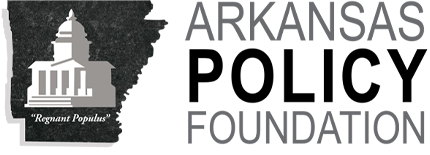(September 2014) An amendment by Arkansas Medicaid expansion proponents is inadequate because it fails to estimate unfunded liabilities, according to a public comment submitted to state and federal authorities by the Policy Foundation. The comment notes, “An estimate of unfunded liabilities is consistent with principles of open government, i.e., transparency.
The Policy Foundation’s public comment contends “a good faith effort” by the state Department of Human Services to “estimate these liabilities would create a more transparent policy process serving the people of Arkansas.”
Other Government Programs Estimate Liabilities
The comment notes, “Other programs (Medicare,1 Social Security,2 and state retirement systems) estimate “actuarial balances,” “unfunded obligations,” or “unfunded liabilities.” It adds, “These terms, in the 21st century, are cited in news media” such as The N.Y. Times and Arkansas Democrat-Gazette.
Identifying Unfunded Liabilities Is An Accounting Reform
The Foundation “maintains accounting and finance” are “central to “AKA Private Option.” DHS “should estimate the program’s unfunded liabilities” using “age enrollment (caseload); life expectancy (mortality); quantity of services (utilization), and estimated state reimbursement for service units (price)”3 data.” The findings should be shared with the people of Arkansas.
1 2014 Annual Report Of The Boards Of Trustees Of The Federal Hospital Insurance And Federal Supplementary Medical Insurance Trust Funds. The report discusses “long-range actuarial status” including negative actuarial balances for three valuation periods (25, 50 and 75 years) ,’ pp. 62-74. The Centers for Medicare and Medicaid Services define actuarial balance as follows: “The difference between the summarized income rate and the summarized cost rate over a given valuation period.”
2 The 2014 Annual Report Of The Board Of Trustees Of The Federal Old Age and Survivors Insurance And Federal Disability Insurance Trust Funds. The Glossary (pp. 235-36) defines unfunded obligation as follows: “A measure of the shortfall of trust fund income to fully cover program cost through a specified date after depletion of trust fund asset reserves. This measure is computed as the excess of the present value of the projected cost of the program through a specified date over the sum of: (1) the value of trust fund reserves at the beginning of the valuation period; and (2) the present value of the projected non-interest income of the program through a specified date, assuming scheduled tax rates and benefit levels. This measure can apply for all participants through a specified date, i.e., the open group, or be limited to a specified subgroup of participants.”
3 The limits of another approach, using only three factors at the federal level, is discussed in Medicaid’s 2013 Actuarial Report.









